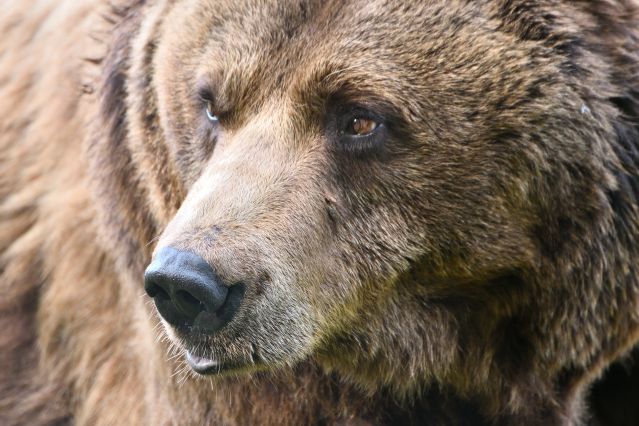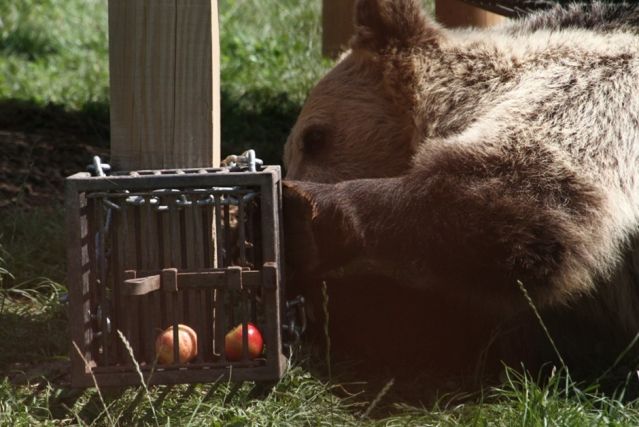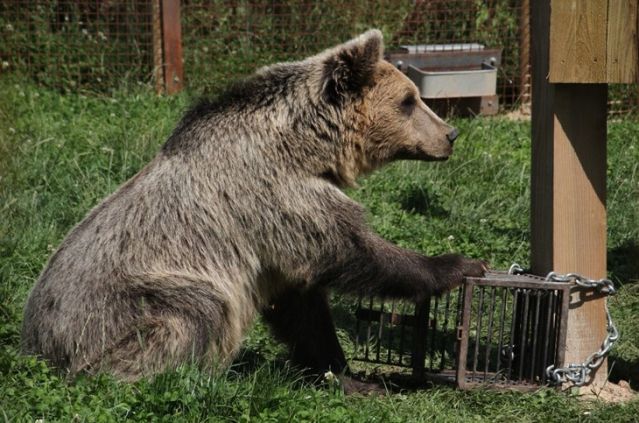Education
Bears Are Adaptable, and Persistent, Problem Solvers
The big brains of brown bears may contribute to their behavioral flexibility.
Posted March 16, 2023 Reviewed by Lybi Ma
Key points
- Bears have large brains for the size of their bodies but there are few studies of their cognitive abilities.
- Scientists presented captive brown bears with two cognitive tests: A puzzle box and an object manipulation task.
- The large brains of brown bears may contribute to their behavioral flexibility in foraging styles in the wild.

What are big brains for? One idea, originally proposed to explain larger brain sizes in primates, is that animals that live in large groups evolved bigger brains to manage their complex social lives.
In support of this hypothesis, there are many big-brained, group-living animals. But there are also some more solitary species with large brains. Take the brown bear (Ursus arctos). Like other bears, brown bears have relatively large and convoluted brains for their body size, despite leading minimally social lives. If they are not using their big brains for cognitively demanding social interactions, what functions might they serve?
The natural behavior of brown bears suggests an answer: They are able to adapt to diverse habitats and they display high levels of behavioral flexibility, especially when it comes to diet and foraging strategies. However, there are few studies directly studying the cognitive abilities of bears, and if those abilities parallel those seen in large-brained, social animals.
Bear-y Clever
In a new study, Helen Chambers and Sean O’Hara from the University of Salford set out to better understand how brown bears use their big brains. They took two cognitive tests that have been used with other species and presented them to 17 bears at seven zoological parks across the UK. The first task, a test of problem-solving, required the bears to figure out how to open a latched metal box to obtain a yummy treat. The second task was a test of object manipulation in which food was suspended out of reach but could be accessed by repositioning a nearby tree stump beneath it.

Overall, the bears proved to be adept problem solvers. In the first task, 14 of the bears engaged with the puzzle box, and all of them were successful at least once in solving it.
“Bears typically used trial-and-error learning to solve the problem, whereby with increasing time the bears would broaden their approach and utilize different strategies or behaviors until one was successful,” says Chambers.
“We also found that two bears appeared to draw the association between latch use and access to the box. By the end of their trials, those bears were gaining access to the box in less than 10 seconds, often with only one attempt and clear use of the latch.”
When it came to the object manipulation task, brown bears were also successful—although not in the way the researchers expected. Of the 15 bears that engaged with the set-up, 13 were able to retrieve the snack. Surprisingly, none of them manipulated the tool provided (the tree stump) to reach the food. While the bears failed to demonstrate tool use, they showed great resourcefulness and used a variety of innovative, alternative techniques, according to Chambers. These included climbing the tree apparatus involved and shaking the food free.
Cognitive Questions
The researchers also identified a number of factors that influenced performance on cognitive tests.
“For example, we found an interaction between the number of successful trials and trial number,” says Chambers. “This suggests that the bears remembered previous trials and adopted successful strategies.”
Differences in motivation level also appear to be an important factor. The faster with which bears engaged the test, the quicker they were in solving it.

Chambers says she and O’Hara have plans in progress to further investigate more factors related to bear cognition, including personality, welfare, and sociality. The researchers would also like to see more bears of different species tested with tasks that are ecologically relevant and draw upon bear-typical behaviors.
“In so doing, engagement will likely be improved, but also the potential enrichment benefits provided by these tasks can be fully realized, thereby improving the welfare of captive bears,” says Chambers.
“I think this research is really exciting because our results provide a potential explanation for the evolution of large brains in brown bears, highlighting their behavioral flexibility and ability to problem-solve and innovate.”
References
Chambers, HR and O'Hara, SJ. 2023. Problem-Solving and Spontaneous Tool-Using Ability in European Brown Bears (Ursus arctos arctos). Animal Behavior and Cognition 10(1): 40-61. Doi: 10.26451/abc.10.01.03.2023.


